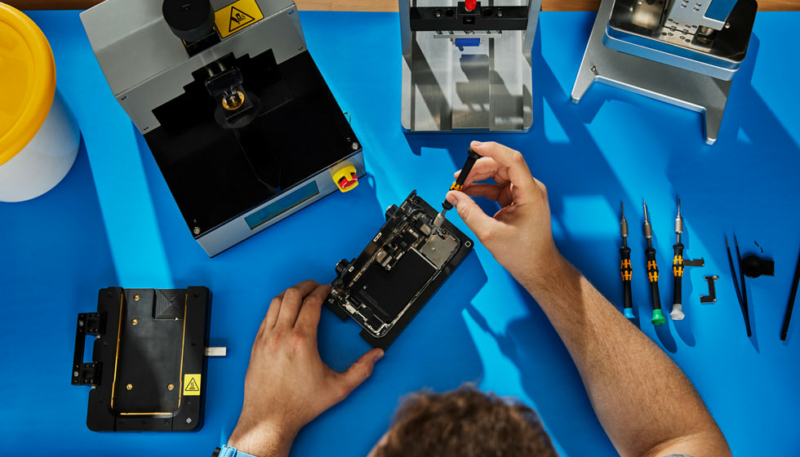Apple earlier today announced that customers and independent repair shops will soon be able to use genuine used Apple parts to repair iPhone 15 and newer models. Used parts include screens, batteries, cameras, and biometric sensors. A parts “pairing” process will be used to determine whether or not a used part is a genuine Apple part.
Also today, Apple’s hardware engineering chief John Ternus sat down with TechCrunch to defend the company’s controversial “parts pairing” process.
Apple has faced criticism over its parts pairing process. Last year, repair website iFixit criticized the process, lowering its iPhone 14 repairability score from 7/10 to 4/10 due to the post-repair parts pairing requirement. The state of Oregon has passed a law banning the process for devices manufactured after January 1, 2025.
Ternus stressed that most third-party parts still work with iPhones:
“‘Parts pairing’ is used a lot outside and has this negative connotation,” Apple senior vice president of hardware engineering, John Ternus, tells TechCrunch. “I think it’s led people to believe that we somehow block third-party parts from working, which we don’t. The way we look at it is, we need to know what part is in the device, for a few reasons. One, we need to authenticate that it’s a real Apple biometric device and that it hasn’t been spoofed or something like that. … Calibration is the other one.”
One exception is third-party parts for repairing Face ID and Touch ID on the iPhone, which he says will not work due to important security reasons:
“You think about Touch ID and Face ID and the criticality of their security because of how much of our information is on our phones,” says Ternus. “Our entire life is on our phones. We have no way of validating the performance of any third-party biometrics. That’s an area where we don’t enable the use of third-party modules for the key security functions. But in all other aspects, we do.”
Customers are alerted when their iPhones contain non-genuine parts. If an iPhone has been repaired, a “Parts and Service History” section will appear in the “General” -> “About” section in the Settings app, and it warns users if non-genuine Apple parts have been installed in the device.
Ternus said this transparency is important:
“We have hundreds of millions of iPhones in use that are second- or third-hand devices,” he explains. “They’re a great way for people to get into the iPhone experience at a lower price point. We think it’s important for them to have the transparency of: was a repair done on this device? What part was used? That sort of thing.”
Apple will later this year expand the “Parts and Service History” section on repaired devices to indicate when a genuine used Apple part has been installed in the device.


